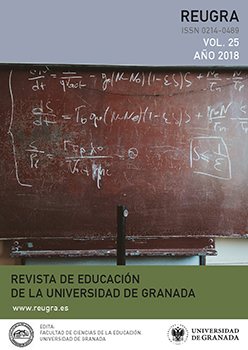Fractions, student’s skills from 15 to 16 years old
Main Article Content
Abstract
The study described in this paper is part of a research project whose aim is to identify the relationship between skills that 15-18-year-olds show when using fractions and their performance to solve descriptive problems involving iterative computing processes of a part of a part of a whole. Results presented come from the analysis of 198 students’ answers to a test about previous knowledge of fractions. The test consists of seven tasks to evaluate three types of skills: Graphic representation, Computation with fractions, and Solving problems. The test was designed considering: a) components of previous studies; b) the curriculum of the first grade of high school (ESO 4th grade in Spain), and c) Mathematics issues necessary to solve such problems. To process data, methodologies for quantitative and qualitative analyses were considered. Quantitative results show low rates of success when using fractions related to the three skills. Concerning the qualitative aspect, it highlights the difficulties with graphic representation in a discrete context; the representation “of what is left” –i.e., part of parts of a whole– and with numerical computation.



